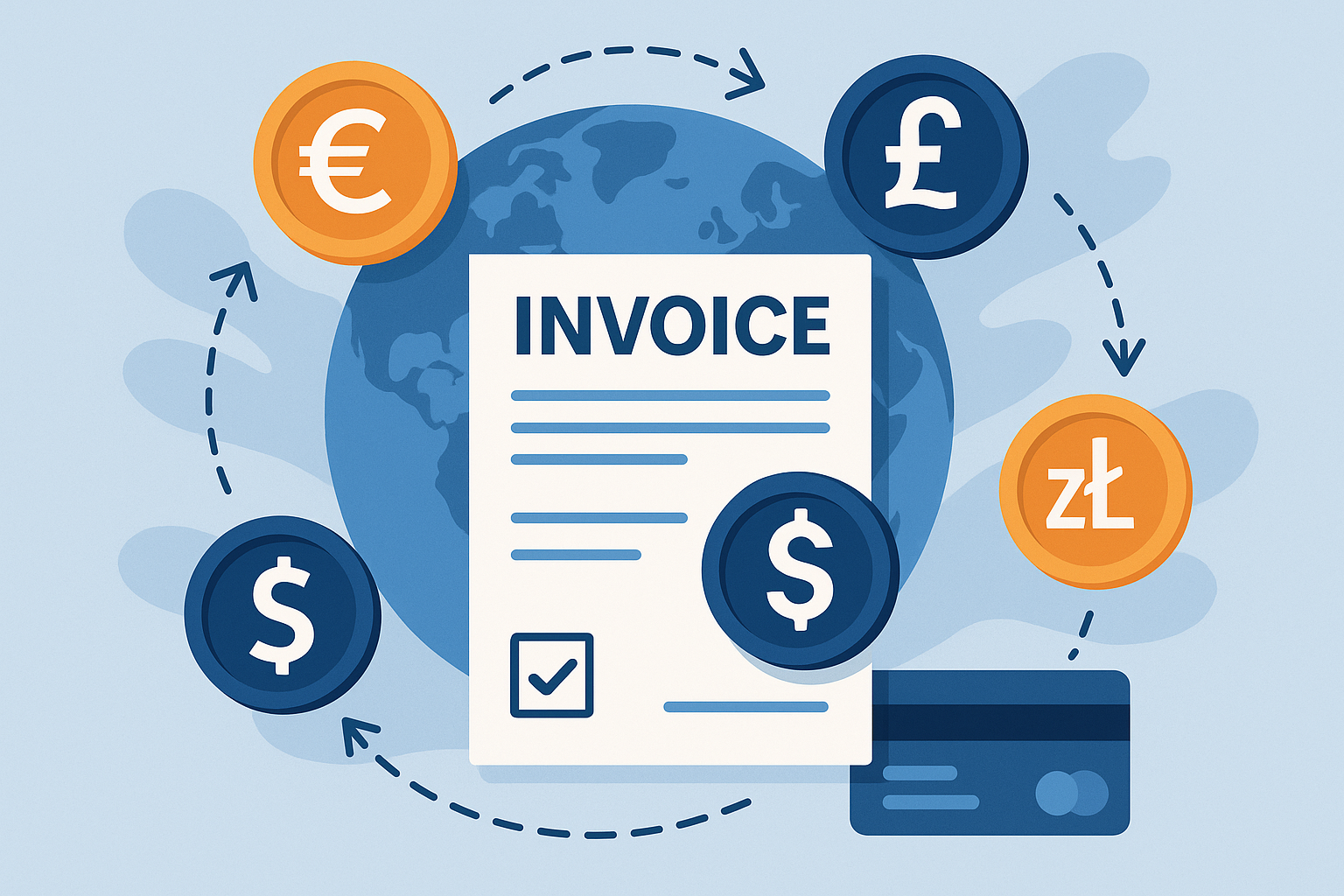Why Accepting Payments in Multiple Currencies Matters
In 2025, it’s not unusual to have clients in the US, EU, UK, or even Asia—all paying in different currencies. If you’re forcing everyone to pay in USD (or your local currency), you may be losing clients—or money—due to bad conversion rates, fees, or poor user experience. Here’s how to accept payments in multiple currencies without the hassle.
Step 1: Choose a Platform That Supports Multi-Currency Invoicing
The right payment provider will let you send invoices and receive payments in multiple currencies—without forcing auto-conversion.
- Wise Business: Local account details in USD, EUR, GBP, and more
- Payoneer: Receive payments in multiple currencies with virtual bank accounts
- Stripe: Accept 135+ currencies via card, bank transfer, ACH
- Revolut Business: Invoicing and FX management for EUR/GBP users
Step 2: Get Local Account Details for Your Key Currencies
Wise and Payoneer allow you to receive funds as if you had a local bank account in:
- 🇺🇸 USD – ACH & wire
- 🇪🇺 EUR – IBAN
- 🇬🇧 GBP – Sort code & account number
- 🇨🇦 CAD – Account number & transit code
Share these with clients for local payment experience, avoiding international transfer fees on their end.
Step 3: Avoid Forced Currency Conversion
Some systems (like PayPal or traditional banks) may auto-convert incoming payments to your home currency, eating 3–5% in FX fees.
To avoid this:
- 📥 Use platforms where you can hold funds in multiple currencies (Wise, Revolut)
- 🕒 Convert manually when rates are favorable
- 💱 Keep a USD or EUR balance for paying international expenses
Step 4: Make Invoicing Simple for Your Clients
Make it easy for clients to pay in their preferred currency. Tips:
- 🧾 Use Wise or Stripe to create invoices in their currency
- 🔗 Add payment links (e.g. Stripe Checkout) with currency pre-set
- 📄 Include your receiving account details on the invoice clearly
Step 5: Automate Currency Matching
Tools like Wise and Stripe automatically detect the payment currency. You can configure settlement logic to avoid conversions or set defaults by client region.
- 💡 Pro tip: Set Stripe to auto-withhold earnings in native currency
- 🔁 Use Wise API to automate incoming and outgoing currency logic
Real-World Example
You run a remote agency with clients in the US, Germany, and the UK:
- Client in the US pays in USD → goes to Wise USD balance
- Client in Germany pays in EUR → goes to Wise EUR IBAN
- You withdraw each currency to a local bank account or card when needed
Conclusion
Getting paid globally doesn’t have to be painful. With the right payment setup, you can accept client payments in multiple currencies—without giving up 3–5% in hidden fees. Wise, Payoneer, and Stripe offer modern solutions to help you operate like a local, no matter where your client is based.





